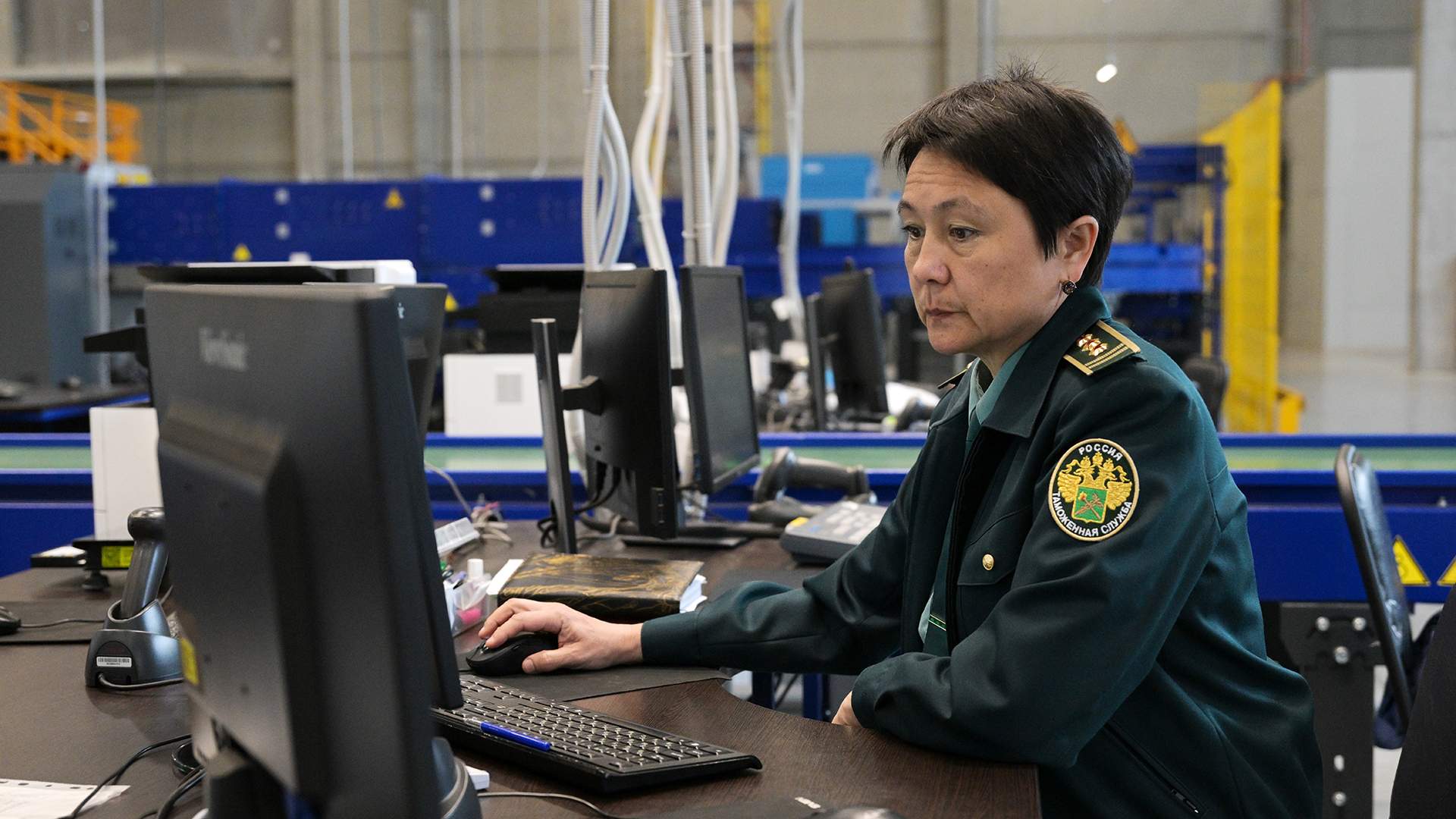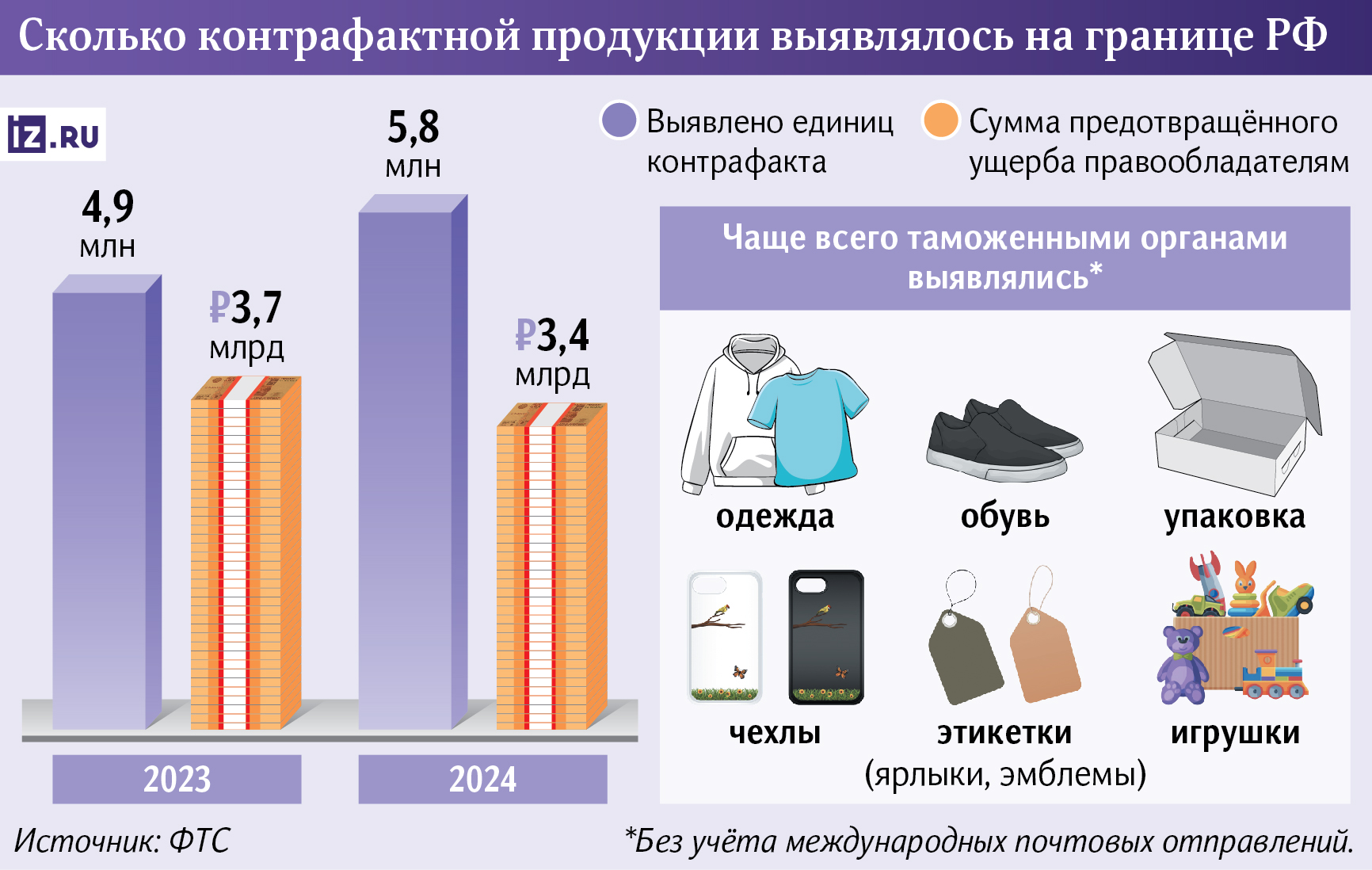Fake weight: Counterfeit clothes and shoes have become more common in Russia.

Counterfeit clothes and shoes, toys, and various packages were most often seized in 2024, the Federal Customs Service (FCS) and market participants told Izvestia. In total, about 6 million units of illegal products were identified. Previously, cigarettes, car parts and other equipment were the leaders among counterfeit goods on the Russian market, but after the departure of foreign brands, textile products became the most in demand. It is becoming more and more difficult to deal with illegal immigrants: they are constantly improving the quality of trademark forgery. About how criminal schemes work and what threatens for the sale of illegal goods — in the material of Izvestia.
Counterfeit goods worth billions
Clothes, shoes, toys, and packaging products (in particular, cases and labels) began to be imported into Russia more often. Over the past year, the number of goods seized at the border has increased by almost 20%. This was reported to Izvestia by the Federal Customs Service.
— In 2024, customs officers identified 5.8 million units of illegal products, preventing damage to copyright holders in the amount of 3.4 billion rubles. In 2023, the number of seized goods was 4.9 million, and they were estimated at 3.7 billion rubles, the ministry stressed.
Illegal products were seized in different regions of Russia. For example, in the first half of 2024 alone, customs officers in the Volga region confiscated 4,500 units of athletic shoes with the trademarks Adidas, Puma, Vans.
Mobile groups of the Samara and Saratov customs offices identified more than 450 thousand pieces of clothing and shoes. Some counterfeits also applied to the luxury segment. In particular, the goods of the Dior and Louis Vuitton brands were forged.
Novosibirsk customs officers have revealed the sale of clothing and hats with signs of counterfeiting in one of the shopping malls. More than 13,000 counterfeit toys were seized in the same region.
Counterfeit products are, as a rule, fakes of well—known trademarks, recalled Irina Sozdatel, Vice-president of the Association of Exporters and Importers (AEI). The main reason for its spread is the desire of consumers to save money. Fakes are often much cheaper than the originals, since they are imported in violation of the rules — without paying duties or with an artificial underestimation of the cost.
Products for children, as one of the most in-demand on the market, are now regularly forged. Thus, children's dolls became the leaders in the number of detected fakes in 2024, the expert added.
— The main flow of counterfeit products comes to Russia from China, the UAE, Turkey and other countries in the Middle East. Attempts to import through the territory of Kazakhstan are also being recorded," she said.
At the same time, some of the products can be imported through parallel imports, which complicates the distinction between legal and illegal goods, adds Ekaterina Kosareva, managing partner of the VMT Consult analytical agency.
Why has the number of fakes increased?
Previously, cigarettes, car parts and other equipment were the leaders among counterfeit goods on the Russian market, experts interviewed by Izvestia recalled. However, due to the sanctions and the withdrawal of many brands from the country, the gray market for the sale of textiles, most often from Western manufacturers, began to develop most actively.
The price of counterfeit products is low, since they are imported without paying duties or with an artificially low cost, experts say.
In their opinion, import schemes are constantly being improved. Counterfeit goods can be mixed with original goods, repackaged or labeled under another brand, or documents can be changed for it.
Another method is to disassemble goods for spare parts and then assemble them inside Russia, Ekaterina Kosareva explained. Unscrupulous importers may also conceal the fact that a trademark or other designation has been applied to products. To detect forgery, the customs authorities use the information provided by the copyright holders when trademarks are included in the customs register, as well as the results of customs examinations.
However, criminals are constantly improving the quality of trademark forgery, which significantly complicates the work of the department. The FCS told Izvestia that their identification requires special skills and knowledge of the distinctive features of the original goods.
What is the threat for trading in counterfeit goods
Counterfeit products are not always low—quality or harmful goods, says Denis Goldman, an independent PR consultant. According to him, this concept, for example, may include replicas.
"Sometimes the difference between an official party and an illegal one can be solely in documentary support," he says.
Nevertheless, in Russia it is impossible to trade either obvious fakes with someone else's trademark, or unofficial replicas. For such a violation, both legal entities and individuals face fines.
If a violation has been committed repeatedly or has caused major damage, a criminal case may be initiated. Under Article 180 of the Criminal Code, sellers face up to six years in prison.
Nevertheless, law enforcement agencies are reluctant to resort to such a measure, referring, for example, to the need to apply to the courts in civil proceedings, according to Alexey Robinov, senior partner at the Vash Patent intellectual Property agency.
In his opinion, the lack of clear regulation of the activities of marketplaces remains an urgent problem.

When considering a claim, the marketplace may refer to the fact that the removal of counterfeit products was carried out by it. However, the courts do not take into account the exact time period in which this happened and refuse to involve, the expert concluded.
In addition to strengthening control, the customs service is actively developing, including in the direction of digitalization, Irina Sozdatel added. New technologies are being introduced that make it possible to identify counterfeit products faster and more efficiently, especially in the field of online commerce. The Central Postal Customs Office in charge of it and mobile groups working on the borders with the EAEU member states have also been created. All this is aimed at reducing the import of counterfeit products into Russia.
Переведено сервисом «Яндекс Переводчик»









